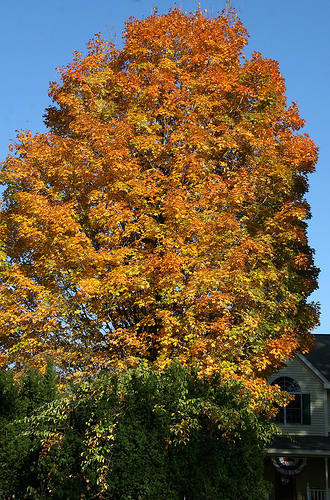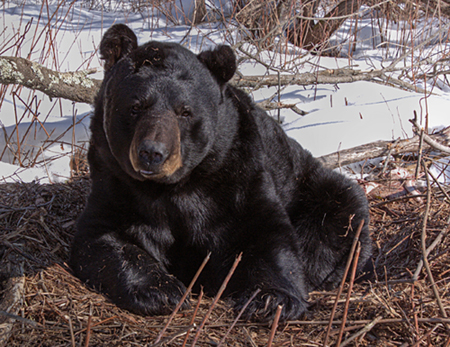Interactions
 Lowbush blueberries grow in a wide variety of
habitats so they are in contact
with numerous other organisms and species. Certain trees that
grow in forests with V. angustifolium have a negative impact on
the lowbush blueberry because the trees canopy the forest.
This blocks the sunlight from reaching the lowbush blueberries. Some of these trees include the white pine, the jack pine, and the
sugar maple.
Lowbush blueberries grow in a wide variety of
habitats so they are in contact
with numerous other organisms and species. Certain trees that
grow in forests with V. angustifolium have a negative impact on
the lowbush blueberry because the trees canopy the forest.
This blocks the sunlight from reaching the lowbush blueberries. Some of these trees include the white pine, the jack pine, and the
sugar maple.
Lowbush blueberries provide a sweet meal to many animals and birds. Grouse, turkey, mourning doves, thrushes, bluebirds, and scarlet tanger birds all eat the berries. Even young whooping cranes feed on lowbush blueberries. Black bears, foxes, deer, rabbits, skunks, fox squirrels, and chipmunks will eat the fruits as well as the twigs and leaves.
Black bears feed
on blueberries, specifically V. angustifolium. Th ere is a direct correlation between black bear
reproductive success and blueberry crops. During poor berry production
years, reproduction is lower in black bears. Also, damage to crops, the
number of livestock lost, and human interactions with black bears increase
during low berry production years.
ere is a direct correlation between black bear
reproductive success and blueberry crops. During poor berry production
years, reproduction is lower in black bears. Also, damage to crops, the
number of livestock lost, and human interactions with black bears increase
during low berry production years.
The blueberry maggot fly is one of the most common insect pests among
V. angustifolium in all lowbush blueberry habitats except in Quebec
and Newfoundland, Canada. This fly infects nearly all the fruits of V.
angustifolium plants. This makes production of V. angustifolium
impossible without the use of insecticides. Many lowbush blueberries are
produced commercially fo r consumer sale. There is zero tolerance for
infested blueberries.
r consumer sale. There is zero tolerance for
infested blueberries.
V. angustifolium has an important interaction with honeybees. Honeybees are the main insect that pollinate lowbush blueberry plants. Without cross pollination by insects, successful reproduction would not be possible for V. angustifolium.
V. angustifolium has an important interaction with ericoid mycorrhizae that provides a beneficial adaptation for the lowbush blueberry. Mycorrhizal literally means fungus root. This describes its relationship with the roots of most plants in nature. The mycorrhizal fungal filaments called hyphae penetrate the roots of the lowbush blueberry. This increases the surface area of the roots which increase water and mineral uptake. This greatly benefits plant development and growth. The fungus also benefits from this relationship by receiving sugars produced by photosynthesis in the plant. Ericoid mycorrhizal interactions are the type of relationships found among members of the family Ericaceae. To learn about another type of mycorrhizal fungus, click here to visit another Multiple Organisms webpage.
In my personal o pinion, the most interesting interaction is between
humans and V. angustifolium. Every year, thousands of people
travel to commercially grown lowbush blueberry fields to
pick their very own fresh, plump, delicious blueberries. Blueberry
picking patches are common where lowbush blueberries are grown. They
are a main commercial item in Michigan and Maine especially. Other
than their pleasantly sweet taste, blueberries are rich in antioxidants and
provide many health benefits to those who eat
them.
pinion, the most interesting interaction is between
humans and V. angustifolium. Every year, thousands of people
travel to commercially grown lowbush blueberry fields to
pick their very own fresh, plump, delicious blueberries. Blueberry
picking patches are common where lowbush blueberries are grown. They
are a main commercial item in Michigan and Maine especially. Other
than their pleasantly sweet taste, blueberries are rich in antioxidants and
provide many health benefits to those who eat
them.
Want to learn some some facts and delicious blueberry recipes? Then let's go to my Interesting Facts page!